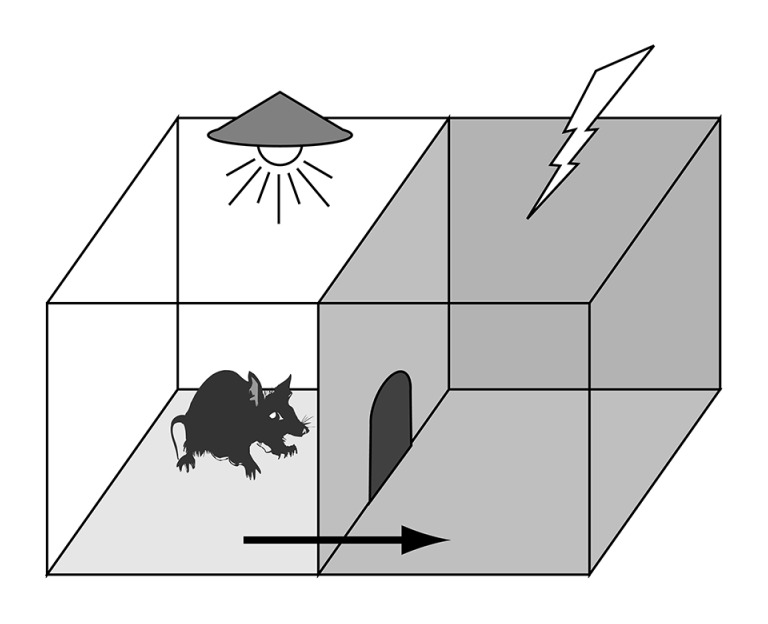Figure 3.
The passive Avoidance Test. It is performed in a cage composed of 2 parts: lighted and dark chambers. An animal may initially freely explore the light and dark compartments. Mice have a natural tendency to enter dark environments. Afterwards, a mild electric foot shock is delivered in 1 of these chambers. The animal learns to avoid the compartment in which an aversive stimulus was previously delivered. The latency to pass the gate in order to avoid the shock is used as an indicator of learning and memory.

